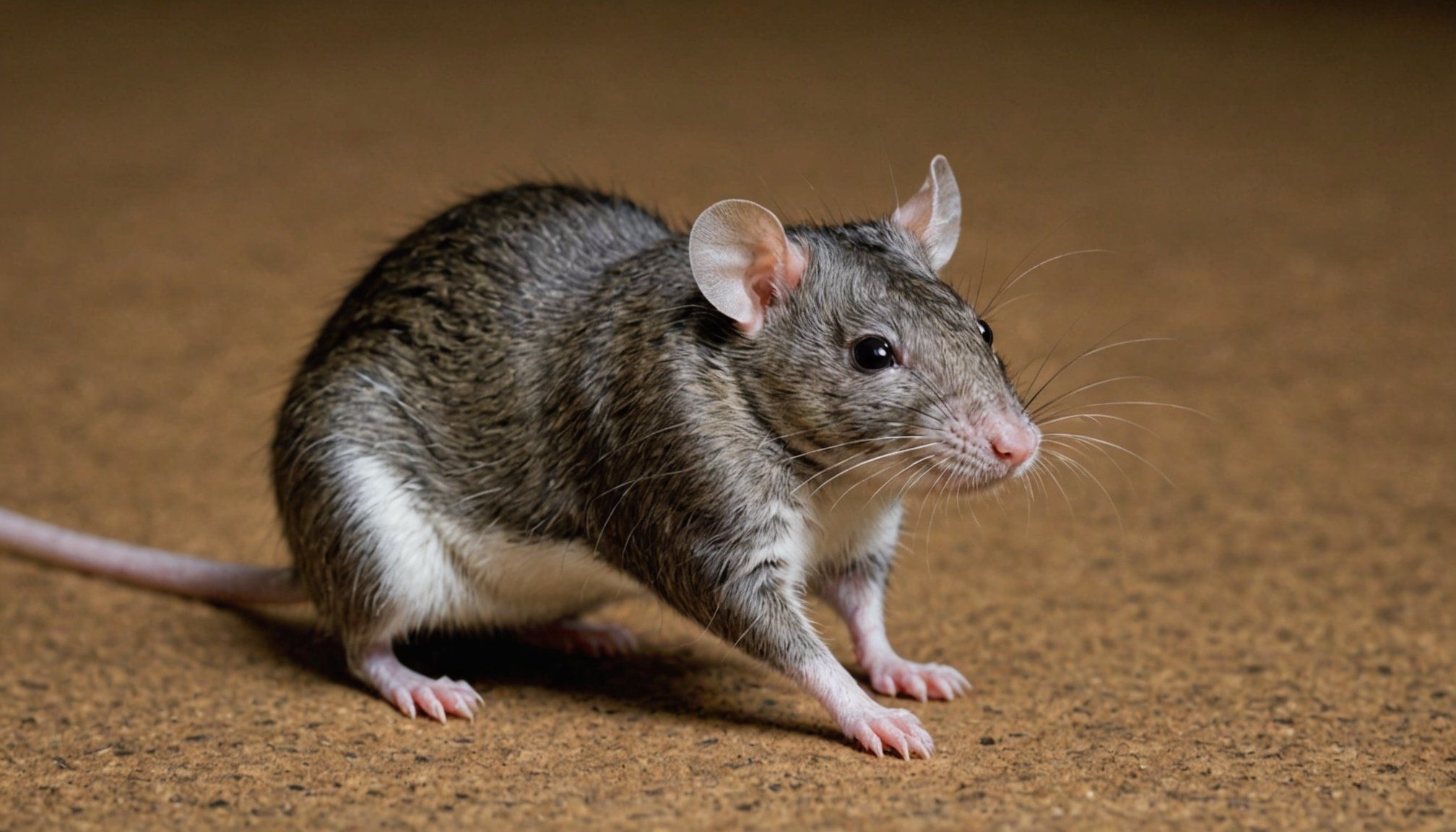Understanding Rat Behavior
Recognising rat behavior is essential in enhancing both the bond and training process with pet rats. These small creatures exhibit complex social behaviors that stem from natural instincts. By acknowledging these traits, you can better interpret their communication cues, improving training techniques.
Natural Instincts and Social Behaviors
Rats, by nature, thrive in social hierarchies. As highly social animals, they use body language and vocalisations to express emotions and intentions. Understanding these signals helps in crafting effective pet rat training methods. This involves patience and observation to unearth their social nuances.
In the same genre : Best Plants to Attract and Nurture British Peacock Butterflies in Your Garden
Communication and Training Techniques
Effective training relies on comprehending how your rat communicates. For instance, bruxing (grinding teeth) suggests contentment, while a puffed-up fur could indicate distress. Training techniques, like using treats for positive reinforcement, should align with these behaviors for effective learning and obedience.
Behavior’s Impact on Learning
Their behavior heavily influences their capacity to learn and obey. Observing how rats interact with their environment offers insights into their preferences, leading to tailored training routines. Such informed approaches not only foster obedience but also enrich their quality of life, deepening the pet-owner bond.
In the same genre : Top Strategies for Seamlessly Introducing a New Puppy to an Older Dog in Your UK Home
Proven Training Techniques
Training rats effectively involves a series of structured rat training techniques that are both humane and highly rewarding. At the core of successful training is positive reinforcement, a method that encourages desired behaviours by rewarding the rat immediately after they perform the correct action. This builds a positive association with the command or trick being taught.
To start, a step-by-step training guide can be invaluable. Begin by choosing a quiet environment to avoid distractions. Start with simple commands like “come” or “stand.” Use treats as incentives, rewarding each correct response swiftly to reinforce the learning process. Gradually introduce more complex tricks as the rat becomes comfortable with initial commands.
Consistency is crucial. Schedule regular training sessions at the same time each day to help your rat anticipate and engage more readily. Each session should be brief, around 10 to 15 minutes, to maintain the rat’s interest and avoid fatigue. Remember, patience and persistence are key. With thorough training techniques and a step-by-step approach, you will see substantial progress.
Positive Reinforcement in Rat Training
Training pet rats can be a rewarding experience with positive reinforcement. The first step is identifying rewards that motivate them. Common choices include treats, praise, and playtime. Treats are particularly effective, given that rats often have a preference for certain foods such as fruits, vegetables, or specially formulated snacks. Praise, combined with a gentle tone, reinforces desired behavior, while playtime offers both mental stimulation and physical exercise.
Implementing positive reinforcement effectively requires consistency and timing. Reward your rat immediately after it displays the desired behavior to strengthen that connection in its mind. Starting with simple tricks and gradually introducing more complex ones helps in behavior shaping. For instance, teaching a rat to stand up before moving onto more complex maneuvers like navigating a small obstacle course.
Measuring progress involves observing the frequency and speed at which your rat performs the trained behavior. Adjusting the type and size of rewards is crucial, especially as your rat masters different tricks. Sometimes, more significant challenges may need more enticing rewards. Being patient and remaining consistent ultimately leads to successful behavior shaping in training sessions.
Common Challenges in Rat Training
Training rats can be a rewarding journey, yet rat training challenges are prevalent and varied. One common issue pet rat owners encounter is resistance. Certain training behaviours may seem stubbornly persistent; however, recognising the root cause is crucial. Often, environmental distractions such as loud noises or unfamiliar scents disrupt the focus of these highly intelligent creatures.
Overcoming these challenges requires strategic adjustments. Implementing training sessions in a quiet, familiar setting minimises distractions, enhancing concentration and cooperation. Additionally, patience plays a crucial role. Repeated practice coupled with positive reinforcement, such as treats or affection, encourages desired behaviours despite initial resistance.
Another training pitfall is the failure to adjust methods to suit individual rat behaviour. Different rats may respond variably to commands and stimuli due to personality differences. Observing each rat’s reactions and adapting techniques accordingly are vital. This could mean altering the reward system or modifying command styles to align with their comfort and learning pace.
Finally, troubleshooting training issues requires a keen awareness of subtle cues in rat behaviour. Signs of stress or anxiety indicate a need for a pause or an alternative approach. Emphasising a gentle, tailored training process helps build trust, paving the way for successful outcomes.
Tricks to Teach Your Pet Rat
Teaching your pet rat some tricks can be a delightful way to enhance your bond and keep them mentally stimulated. Popular rat tricks include rolling over, jumping through a hoop, and even fetching small objects. Not only do these activities provide physical exercise, but they also encourage problem-solving skills.
To teach the “roll over” trick, begin by holding a treat just out of reach, near your rat’s nose. Gently guide them in a circular motion as they follow the treat, rewarding them once they complete a full roll. For the “jump through hoop” trick, position a small hoop at ground level. Entice your rat to move through it using a treat, then gradually raise the hoop as your rat gains confidence.
Incorporating tricks into interactive playtime can further enrich your pet’s experience. Set up mini obstacle courses or treasure hunts that involve their learned actions, like jumping through hoops or retrieving hidden treats. This not only keeps your rat engaged but also allows for endless fun rat activities that strengthen your relationship. By consistently practising these steps, your pet rat will soon master a variety of tricks, making playtime exhilarating for both of you.
Enhancing Interaction Through Training
Incorporating interactive pet training into your routine can significantly strengthen the bond between you and your pet rats. Training isn’t just about teaching tricks; it’s an opportunity to cultivate a deeper rat-human relationship. By engaging in activities that stimulate their minds, not only does it enhance their skills, but it also fosters trust and understanding.
Bonding with pet rats goes beyond the basics of care. Simple activities, like teaching your rats to navigate a maze or respond to their names, can lead to more meaningful interactions. You might even enjoy playing a game of fetch with them using small objects or letting them explore puzzle toys. Such activities build excitement and reinforce positive experiences, deepening your connection.
Remember, patience and empathy are crucial when developing a strong relationship with your rats. Some rats might quickly adapt, while others require more time. Understanding their cues and responses helps tailor your training methods to suit their preferences. This considerate approach not only boosts their learning but also enriches the interactive experience, making your companionship with them truly rewarding.
Real-Life Examples and Anecdotes
While discussing rat training stories, it is inspiring to hear about pet owners who have embarked on successful journeys with their furry friends. These tales often highlight both the joys and challenges of training rats, providing valuable insights for those considering this endeavour. For instance, one owner shares a success story about teaching their rat to navigate a miniature obstacle course. The key strategies involved using positive reinforcement, consistency, and patience.
Such training experiences often reveal what approaches work best. Consistent rewards like treats and verbal praises have been particularly effective in encouraging desired behaviours. These methods not only strengthen the bond between owner and pet but also promote the rat’s cognitive development.
However, not every effort leads to immediate success. Some training experiences necessitate adaptations and creative problem-solving. For example, an owner teaching their rat to respond to a name might need to try different cues and rewards. This flexibility often results in better outcomes, showcasing the importance of perseverance.
These stories and experiences offer lessons learned that can guide others. The shared knowledge from these tales encourages new and seasoned rat owners alike to explore training possibilities with optimism and creativity.











